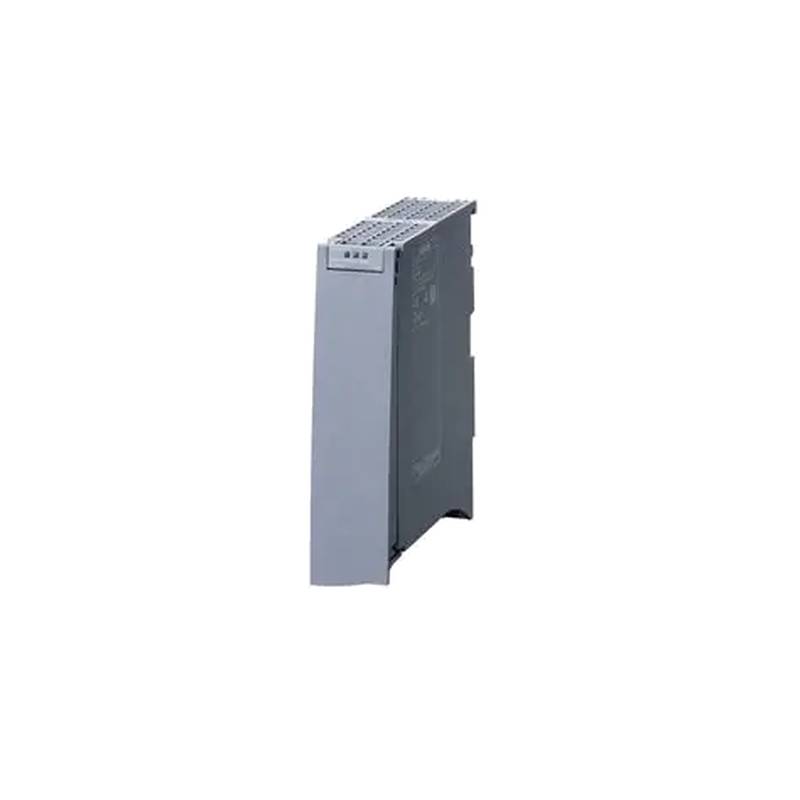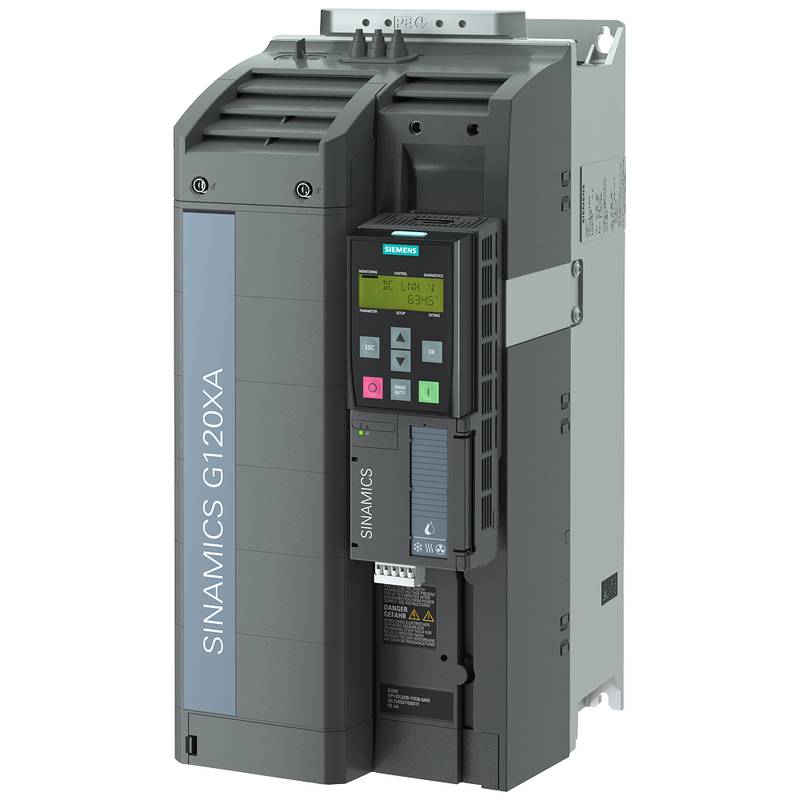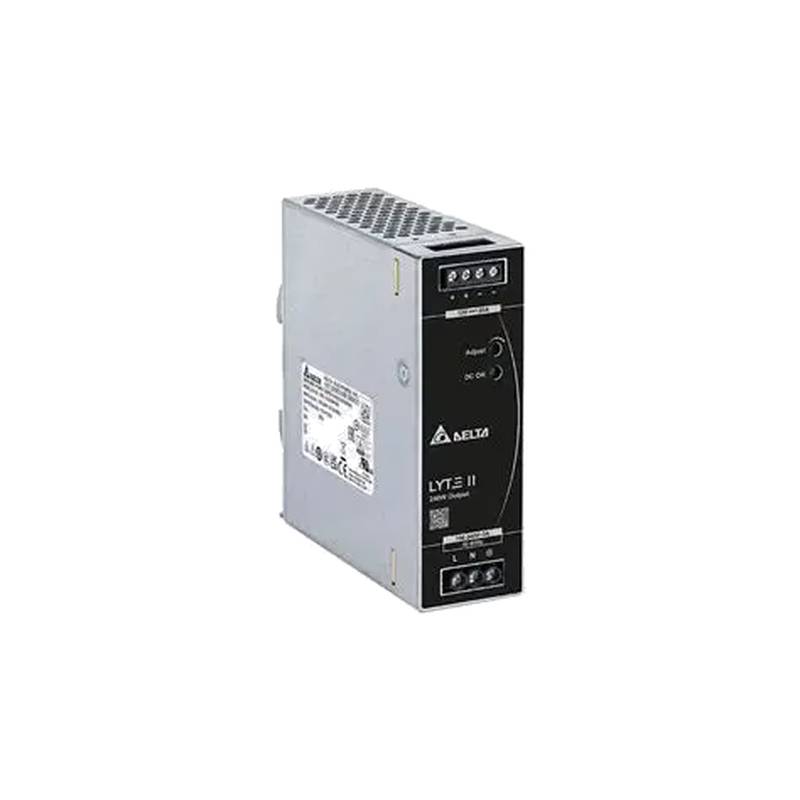
The Moxa EDS-205 5-Port Unmanaged Industrial Ethernet Switch is a robust solution designed for reliable data transmission in harsh industrial environments. This switch boasts critical advantages such as wide operating temperature ranges, a rugged metal housing for durability, and essential features like redundant power inputs for uninterrupted operation. With 5 Fast Ethernet ports, it offers straightforward connectivity for automation systems, manufacturing floors, and critical infrastructure.
| Feature | Specification |
| :-------------------- | :-------------------------------------------- |
| Number of Ports | 5 x 10/100BaseT(X) |
| Ethernet Standards | IEEE 802.3, IEEE 802.3u, IEEE 802.3x |
| MAC Table Size | 1K |
| Switching Capacity | 1 Gbps |
| Packet Forwarding Rate | 0.74 Mpps |
| Power Input | 12/24/48 VDC (9.6 to 60 VDC) |
| Power Consumption | Max. 2.28 W @ 24 VDC |
| Operating Temperature | -40 to 75 °C (-40 to 167 °F) |
| Housing | IP30, aluminum alloy |
| Dimensions | 30 x 88 x 61 mm (1.18 x 3.46 x 2.40 in) |
| Mounting | DIN-rail, wall-mount |
| MTBF | 1,500,000+ hours |
Core Features & Market Positioning
The Moxa EDS-205 stands out in the unmanaged industrial Ethernet switch market due to its exceptional reliability and resilience in demanding conditions. Its compact form factor and DIN-rail mounting capability facilitate easy integration into control cabinets and existing infrastructure. Unlike consumer-grade switches, the EDS-205 is engineered with industrial-grade components, ensuring stability and longevity even when subjected to vibration, shock, and extreme temperatures. This focus on ruggedness positions it as a dependable choice for applications where network downtime is not an option, such as in factory automation, transportation systems, and SCADA networks. The switch's plug-and-play functionality simplifies deployment, making it an ideal solution for users who require immediate network connectivity without complex configuration.
Key Application Scenarios
This 5-port unmanaged switch excels in various industrial networking scenarios. It is frequently deployed in manufacturing plants to connect PLCs, HMIs, sensors, and other automation devices on the production line, enabling real-time data acquisition and control. In transportation, the EDS-205 can be found in traffic control systems, railway signaling, and intelligent transport systems (ITS) for reliable communication between roadside units and central management platforms. Its wide operating temperature range makes it suitable for outdoor applications or environments with fluctuating temperatures, such as in water/wastewater treatment facilities or oil and gas operations. The switch is also a common component in building automation systems, connecting access control, surveillance, and HVAC equipment.
Practical System Integration Guidance
Integrating the Moxa EDS-205 into an industrial network is a straightforward process, primarily due to its unmanaged nature. For power, connect the appropriate DC voltage (9.6 to 60 VDC) to the designated power terminals, ensuring polarity is observed. A redundant power input is available, allowing connection to two separate power sources for enhanced reliability. Network connections are made using standard industrial Ethernet cables (e.g., Cat5e or Cat6) with RJ45 connectors. Simply plug your network devices into the 10/100BaseT(X) ports. No software configuration is necessary; the switch automatically negotiates speed and duplex settings with connected devices. For DIN-rail mounting, slide the switch onto the rail and secure it using the integrated clips.
Operation and Risk Mitigation
Operating the Moxa EDS-205 requires minimal intervention, as it is designed for "set it and forget it" functionality. However, understanding potential failure points can mitigate risks. Over-voltage or incorrect polarity during power connection is a primary concern; always verify the power source specifications against the switch's input requirements. Environmental factors, such as excessive dust or moisture, should be managed by ensuring the switch is installed within its IP30 enclosure rating or in a protected enclosure. While unmanaged, the switch does feature LED indicators for power, link status, and activity on each port, which are crucial for basic troubleshooting. If a port is not active, check the connected device, the cable integrity, and the corresponding LED status.
Scalability & Long-Term Value
The Moxa EDS-205 offers inherent scalability through its ability to be cascaded with other network devices. While it provides 5 ports, multiple EDS-205 units can be interconnected to expand network capacity as a facility grows. Its robust construction ensures a long operational lifespan, contributing to lower total cost of ownership. Compatibility with standard industrial communication protocols means it seamlessly integrates with a wide array of automation equipment from various vendors. For organizations moving towards Industrial IoT (IIoT) and Industry 4.0 initiatives, the EDS-205 serves as a reliable foundational element, providing the necessary wired network backbone for connecting devices that will feed data into advanced analytics and control platforms.
Frequently Asked Questions
Q1: What is the maximum cable length for the Moxa EDS-205?
The Moxa EDS-205 supports standard Ethernet cable lengths. Each port is designed to handle up to 100 meters of Cat5e or Cat6 cable. This ensures robust connectivity across typical industrial floor layouts.
Beyond 100 meters, signal degradation occurs. For longer distances, consider industrial media converters or switches with fiber optic ports. These extend network reach significantly.
Proper cable management and quality Ethernet cables are essential. Avoid kinks, sharp bends, and electromagnetic interference sources.
Q2: Can I manage the Moxa EDS-205 switch remotely?
No, the Moxa EDS-205 is an unmanaged industrial Ethernet switch. It does not offer remote management features or a web interface for configuration. Its operation is plug-and-play.
Management capabilities are typically found in Moxa's managed switch series. These offer advanced features like VLANs, QoS, and SNMP monitoring.
For this switch, remote monitoring would rely on the connected devices' capabilities or a separate network monitoring system observing link status.
Q3: What are the power requirements for the Moxa EDS-205?
The Moxa EDS-205 accepts a wide DC input voltage range. It supports 12/24/48 VDC, specifically from 9.6 VDC to 60 VDC. This flexibility is ideal for various industrial power supplies.
The switch features dual power inputs for redundancy. Connecting two power sources enhances network uptime in case of a primary power failure.
Always ensure the power supply's voltage and current meet the switch's consumption. Maximum consumption is 2.28 W at 24 VDC.
Q4: Does the Moxa EDS-205 support PoE?
No, the Moxa EDS-205 model does not natively support Power over Ethernet (PoE). It is designed solely for data transmission and requires a separate power source for its operation.
If PoE is required for connected devices, you would need to use PoE-enabled switches or PoE injectors. These devices supply power alongside data over the Ethernet cable.
Moxa offers other industrial switch series that include PoE capabilities if this functionality is essential for your application.
Q5: What is the operating temperature range of the Moxa EDS-205?
The Moxa EDS-205 is built for demanding environments and operates reliably within a wide temperature range. It supports from -40°C to 75°C (-40°F to 167°F).
This broad temperature tolerance ensures consistent performance in extreme conditions, such as in outdoor enclosures or unheated facilities. It minimizes the risk of thermal shutdown.
Ensure adequate ventilation if operating at the upper temperature limits. Avoid direct sunlight exposure if possible to maintain optimal conditions.
Q6: How do I install the Moxa EDS-205 on a DIN rail?
Installation on a DIN rail is a simple process for the EDS-205. The switch comes with an integrated mounting clip on its rear.
Align the clip with the top edge of the standard DIN rail and push the switch downwards until it securely latches onto the rail. Ensure it is firmly seated.
For wall mounting, an optional mounting bracket kit is usually available and must be attached to the switch first.
Q7: What is the warranty period for the Moxa EDS-205?
Moxa typically provides a generous warranty for its industrial networking products. The EDS-205 usually comes with a 5-year warranty.
This extended warranty reflects Moxa's confidence in the product's durability and long-term reliability in industrial settings. It covers manufacturing defects.
Always refer to the specific product documentation or Moxa's official website for the most accurate and up-to-date warranty information for your region.
Q8: Can I daisy-chain multiple Moxa EDS-205 switches?
Yes, you can daisy-chain multiple Moxa EDS-205 switches. This is a common method for expanding network coverage in industrial facilities.
Each switch acts as a connection point. Simply connect an Ethernet cable from a port on one switch to a port on the next switch in the chain.
Be mindful of the total number of hops, as excessive daisy-chaining can introduce latency and potential bottlenecks in very large networks.
Q9: What does "unmanaged" mean for this switch?
"Unmanaged" means the Moxa EDS-205 is a plug-and-play device. It requires no configuration or software setup for basic operation.
It automatically handles traffic forwarding, speed negotiation, and duplex settings. There is no web interface, CLI, or SNMP for configuration.
This simplicity makes it ideal for straightforward network needs where advanced features are not required, reducing complexity and potential setup errors.
Q10: How do I troubleshoot a port that is not working on the EDS-205?
First, check the LED status lights for the specific port. A solid green light usually indicates a valid link, while an orange light might show activity.
Verify the Ethernet cable is securely connected at both ends and is not damaged. Test the cable with another device if possible.
Ensure the connected device is powered on and configured correctly. If issues persist, try connecting a different known-working device to the port.

























